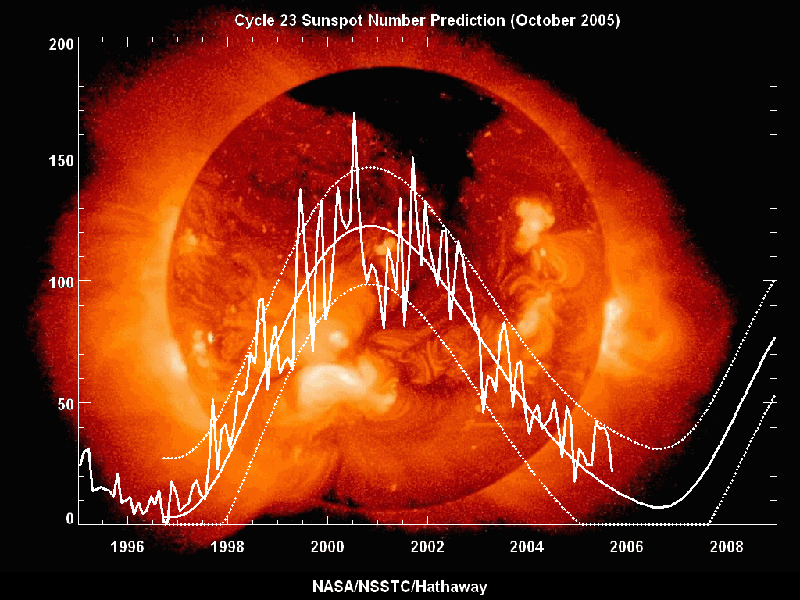 The polar opposite of the Sun's solar maximum period is the solar minimum. In the Sun's eleven year cycle, the solar minimum is the period when there is least solar activity, as contrasted to the solar maximum, when solar activity is at its peak. It is during this period that the occurrence of sunspots, coronal mass ejections, and solar flares decreases in frequency; sometimes not occurring for days on end.
The polar opposite of the Sun's solar maximum period is the solar minimum. In the Sun's eleven year cycle, the solar minimum is the period when there is least solar activity, as contrasted to the solar maximum, when solar activity is at its peak. It is during this period that the occurrence of sunspots, coronal mass ejections, and solar flares decreases in frequency; sometimes not occurring for days on end.
The date of the minimum can be determined about six months after the actual occurrence of the solar minimum, since the rate of the sunspot activity still needs to be averaged out over a period of twelve months. The solar minimum period is considered as the safest time to travel in space and go on missions for astronauts, since there are fewer solar storms and solar radiation to worry about.
An accurate prediction of the occurrence of a solar minimum, just like for solar maximums, is tremendously difficult. The National Center for Atmospheric Research developed a model to try and precisely predict when solar minimums will occur. It has a reported accuracy of 98%. In 2008, at the end of Solar Cycle 23, there was an unusually long solar minimum which scientists are finding hard to explain. Out of the year's 365 days, 266 days are without sunspots. This has been the lowest frequency of the occurrence of sunspots since 1913.
Scientists remarked that the Sun is undergoing a “very deep solar minimum.” Solar wind pressure dropped 20% from the normal average of past solar minimums, while there is also a marked decrease in solar radiance and solar radio emissions. An analysis by the National Center for Atmospheric Research pointed the cause of the extended solar minimum to the changes in the Sun's “conveyor belt”, where plasma circulates from the Sun's poles to the equator. Recently developed models for this conveyor belt theory predicted correctly that the Cycle 23 will experience a prolonged solar minimum.
